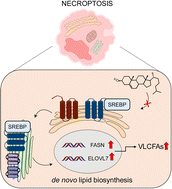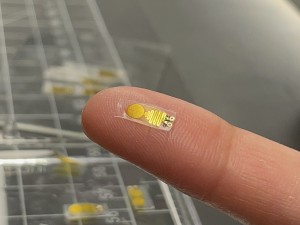2023-09-07 バッファロー大学(UB)
◆現在、バッファロー大学の科学者たちは、この細胞の爆発のメカニズムと、重要なことに、それを最小限に抑える方法を明らかにしました。彼らの以前の研究によれば、壊死中に細胞は膜上に有害な脂肪酸が蓄積することで破裂するとされています。新しい研究では、脂肪酸や他の脂質の生成者であるsterol regulatory element-binding proteins(SREBPs)を抑制することで、細胞をより完全な状態に保ち、死亡する細胞が少なくなることが示されました。
◆これにより、がんの転移を促進するがん細胞からの炎症性分子の放出を減少させることができます。今後、脂肪酸蓄積の基礎的な理解は、細胞死における脂質関連の有害性に対する治療戦略の開発に寄与することを期待しています。
<関連情報>
- https://www.buffalo.edu/news/releases/2023/09/explosive-cell-death.html
- https://pubs.rsc.org/en/content/articlelanding/2023/cb/d2cb00172a
SREBP活性化はネクロプトーシスにおける脂肪酸蓄積に寄与する SREBP activation contributes to fatty acid accumulations in necroptosis
Daniel Lu, Laura R. Parisi,Omer Gokcumen and G. Ekin Atilla-Gokcumen
RSC Chemical Biology Published:13 Feb 2023
DOI:https://doi.org/10.1039/D2CB00172A
Abstract
Necroptosis is a type of programmed cell death. It is characterized by membrane permeabilization and is associated with the release of intracellular components due to compromised membrane integrity which induces a strong inflammatory response. We recently showed that the accumulation of very long chain fatty acids (VLCFAs) contributes to membrane permeabilization during necroptosis. However, the mechanisms that result in the accumulation of these cytotoxic lipids remain unknown. Using comparative transcriptomics and digital PCR validations, we found that several target genes of sterol regulatory element-binding proteins (SREBPs) were upregulated during necroptosis, suggesting that they might be responsible for the accumulation of VLCFA in this process. We demonstrated that activation of SREBPs during necroptosis exacerbates the permeability of the plasma membrane and cell death. Consistent with these observations, targeting sterol regulatory element-binding protein cleavage-activating protein (SCAP), a protein involved in SREBP activation, reversed the accumulation of VLCFAs, and restored cell death and membrane permeabilization during necroptosis. Collectively, our results highlight a role for SREBP in regulating lipid changes during necroptosis and suggest SREBP-mediated lipid remodeling as a potential target for therapeutics to reduce membrane permeabilization during necroptosis.



